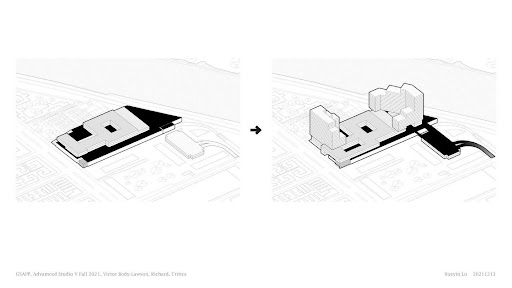
New York, NY Amid ongoing conversations about housing equity and neighborhood resilience, distinguished designer Xueyin Lu has introduced a groundbreaking urban vision that positions architecture as a catalyst for social transformation. Her project, Above the Station, reimagines Harlem's 148th Street train yard as a layered community infrastructure, fusing deeply affordable housing with access to education, childcare, and job training.
Set in Harlem's historic Bradhurst neighborhood, Above the Station proposes over 650 units of mixed-income housing, with a substantial percentage dedicated to families most in need. Lu's design draws from rigorous demographic analysis, offering solutions tailored to a community with a high proportion of low-income households and single-parent families. Her approach not only addresses housing but also provides infrastructure for upward mobility and intergenerational support.
"Architecture must restore dignity by restoring access not only to housing but to the daily rhythms of education, care, and opportunity," said Lu.
In addition to housing, Lu's design introduces a K–12 educational campus and a neighborhood hub offering early childcare, after-school tutoring, and adult job training. These programmatic elements are not simply co-located but also are architecturally integrated, creating intuitive, walkable pathways that encourage intergenerational interaction and community cohesion.
Critically, the design confronts the spatial fragmentation caused by the existing rail infrastructure. Lu transforms this historic barrier into a connective civic spine, using open courtyards, transparent circulation, and inviting public interfaces to restore urban continuity and enhance community safety.
"In Harlem, mobility must mean more than movement. It must mean opportunity," Lu emphasized. By reframing infrastructure not as a constraint but as a civic foundation, Lu's proposal sets a new precedent for equitable development anchored in dignity, inclusion, and design excellence.
Lu's influence extends beyond this flagship project. With a professional portfolio spanning the United States and China, she brings a cross-cultural and interdisciplinary lens to architecture. In Jingdezhen, she spearheaded the revitalization of a historic ceramic factory district, blending contemporary civic programs with traditional urban rhythms to rejuvenate a culturally significant but declining area. In Chongqing, her research advanced new strategies for reconnecting high-density urban zones disrupted by outdated transit systems, advocating for vertical urbanism and layered connectivity.
Now serving as a key designer at Payette, a nationally acclaimed architectural firm based in Boston, Lu plays a pivotal role in shaping high-performance laboratory environments that support cutting-edge research and education. Her work demonstrates a refined integration of technical precision and human-centered design, prioritizing the lived experiences of researchers, scientists, and students through a focus on comfort, spatial clarity, and inclusive access within complex scientific settings.
Across all her endeavors, Lu consistently demonstrates originality, cultural insight, and design leadership. Her projects reflect a deep commitment to architecture's social mission, elevating it as a platform for empowerment, participation, and transformation. Her voice is increasingly recognized as part of a new generation shaping the future of urban design through ethical, inclusive, and globally resonant practice.(By: Jon Stojan)









